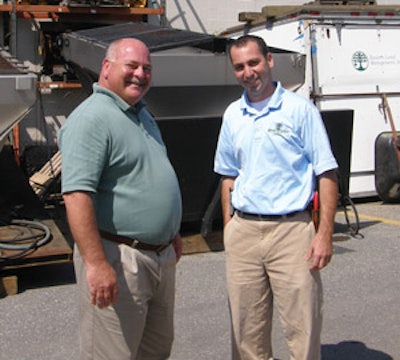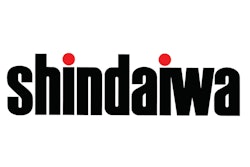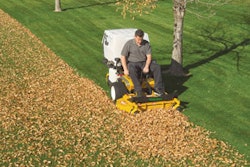
Bruce Moore Sr., CCLP and president/founder of Eastern Land Management Inc. in Stamford, CT, has been in business 30 years. Over that time span, he has maintained residential properties, renovated and built golf courses, and performed full-service landscape management for large corporate clients, which is what his company does today. One would naturally think that as the cost of living has increased over the years, so has the price of his company's service offering. Not true, says Moore.
In fact, the price his company charges for its services hasn't changed appreciably in over a decade. In a few cases, clients are now paying anywhere from 25-30% less than they paid 15 years ago for essentially the same service. That's tough to swallow, especially considering the rising cost of fuel, insurance and wages. But it's a fact of life on the East Coast—and pretty much everywhere else.
As this owner says: "If you're going to compete successfully in the commercial maintenance market, your pencil has to be just as sharp as the ones your competition and your customers are using."
Make change work to your advantage
Thinking back over his long career, Moore sees a definite change in methods and styles, all directed toward improving service and keeping costs down. "When I first started mowing, I used Locke reel mowers," he recalls. "At the time, they were the Cadillac of mowers. They gave a nice cut, but they also were costly to maintain. In the mid-80s, I purchased one of the first intermediate walk-behind rotary mowers in the area, a Bunton with a 36-inch cut. The mower reduced our mowing and trimming time and cut down on maintenance costs. A few years later, the hydro walk-behinds came into the market, once again adding productivity while reducing maintenance and downtime."
Moore's mowing fleet now includes 25 Exmark walk-behind and zero-turn riders. "I don't know what the future holds in terms of mowing technology," he emphasizes. "A few years ago, I participated in a focus group on robotic mowers. Who knows, some day we may have three or four robotic mowers in the back of our trucks and just drop them off on properties, only to stop by later to pick them up after they've finished mowing." Moore laughs and adds, "Anything is possible."
The point is, though, that the industry and technology are changing, and only those companies that can keep up will continue to be competitive. As Moore points out, his corporate clients analyze all their costs in an effort to keep them to a minimum. Service providers must be able to do the same.
"Fifteen to 20 years ago, we were the main player in our market and could almost write our own ticket," Moore points out. "Then, a major competitor appeared on the scene and took nearly all the 'low-hanging fruit.' In most cases, we didn't have close relationships with the accounts we lost, but it was still a wake-up call. We brought in a consultant to help with pricing, and we put systems in place that helped us more effectively track costs."
Cutting costs in the field—and at home
Since then, one could say that Moore's company has been waging war on costs and looking for ways to deliver an even better product more efficiently.
"Right now we're experimenting with Palm Pilots to further reduce data entry time and optimize our job costing," Moore tells. "We've also considered the use of GPS technology in our trucks. It's something we have to consider, despite the 'big brother' perception it conveys to our employees. If and when we use the new technology, we will employ it initially in our snow trucks to help document when a crew arrived on site and how long it worked there."
Moore, together with his son Bruce Jr., recently reconfigured maintenance crews to reduce their size and increase their area of responsibility. Two-person crews are the norm, which provide full-service maintenance, making it easier to track costs and provide accurate performance incentives. To reduce windshield time, crews for larger accounts often report directly to the site.
The company practices lean management. Its next Kaizen event will target improvements in the service shop. "We're in week 46 of Jim Paluch's lean management program," says Moore. "It has helped us identify and eliminate wastes. Even more significant is the fact that the program gets our employees involved and encourages them to become more familiar with all areas of our operation."
An enhanced training program and partnering with commercial clients are among other ways Eastern Land Management has sharpened its service offering and pencil over the years.
"The market and our industry have changed dramatically over the years," Moore emphasizes. "There's no question that business owners will have to be sharper today than we were three decades ago. Training is not an option—it is a necessity. Developing a closer relationship with customers will be a requisite to ensure that contractors can deliver the services clients need at a price that is agreeable to all parties."
Taking advantage of new technology and training tools, fine-turning operations, and partnering with suppliers and clients has become a way of life for Eastern Land Management. The mind-set is part of a long-term strategy to contain costs while optimizing its service offering—something all contractors will have to embrace as competition and rising costs continue to keep a lid on prices.
Quick, Effective Cost-Cutting
As market pressures have held pricing down, Eastern Land Management has focused on a few ways to cut costs:
• Implement technology, such as Palm Pilots and GPS tracking devices, to help monitor costs and reduce administrative time
• Two-person maintenance crews make cost-tracking and performance incentives easier to manage
• Crews for large properties often report directly to the site, reducing windshield time
• Lean management training targets areas of waste, including service shop operations
Eastern Land Management
Stamford, CT
Eastern Land Management, located in Stamford, CT, offers a full-service landscape management package primarily to commercial clients. The company employs 40 people during the busy season. Its equipment lineup includes Exmark riders and intermediate walk-behind mowers, Shindaiwa handheld equipment, GMC pickups and dump trucks, and Pace American enclosed trailers.




















